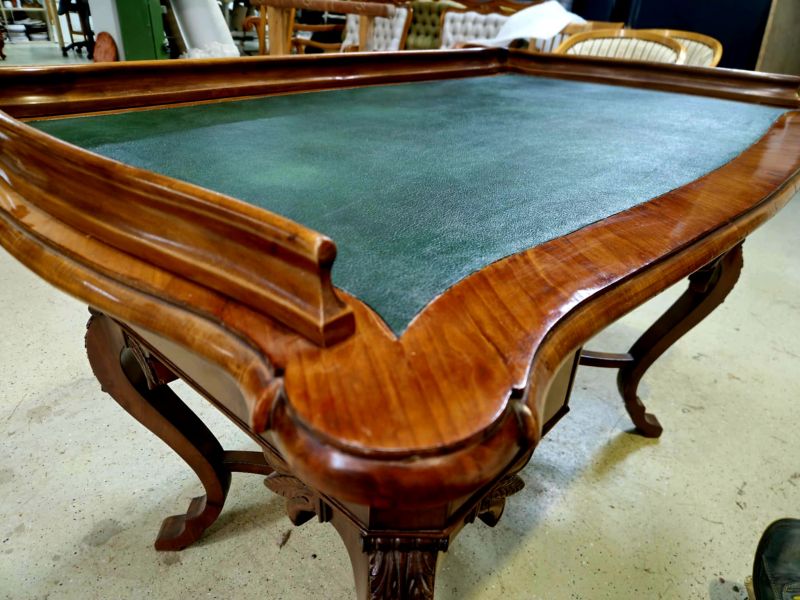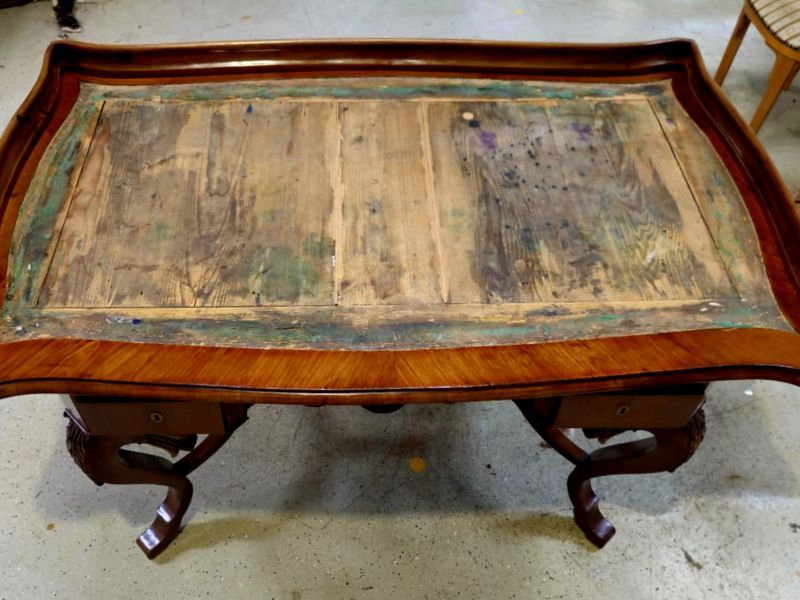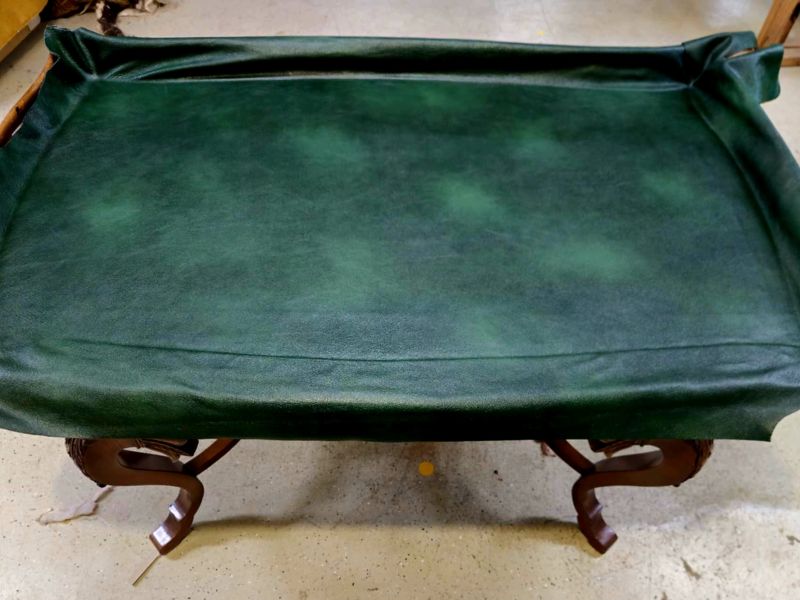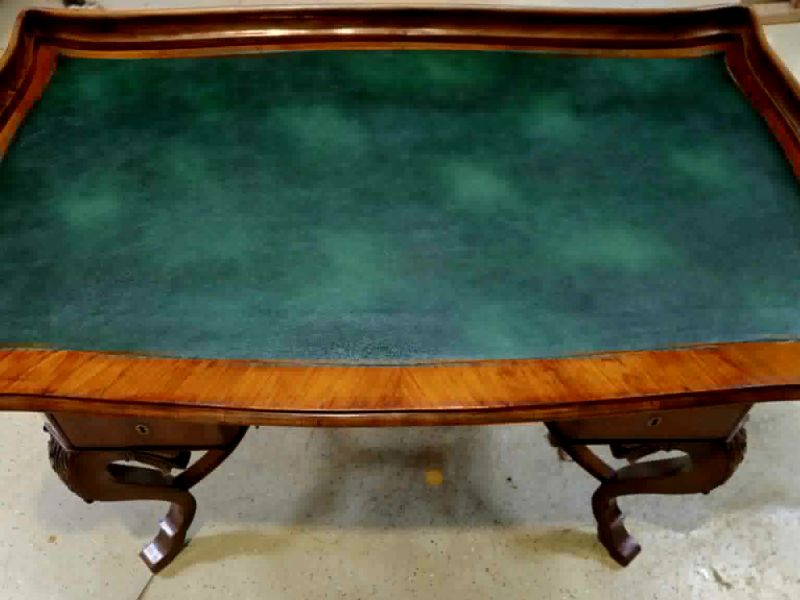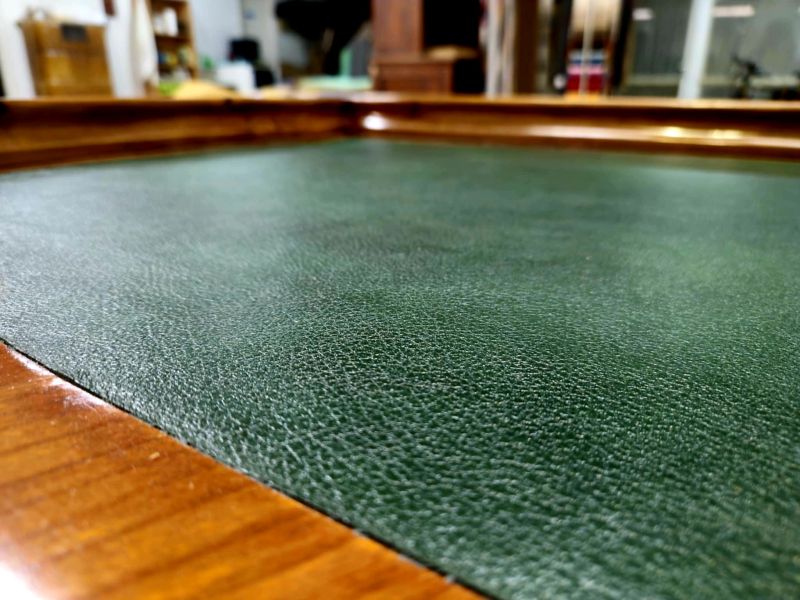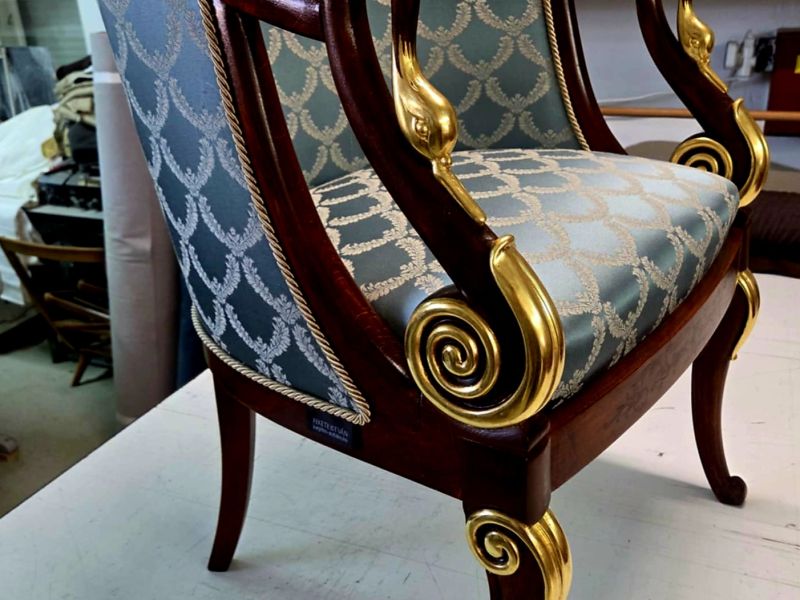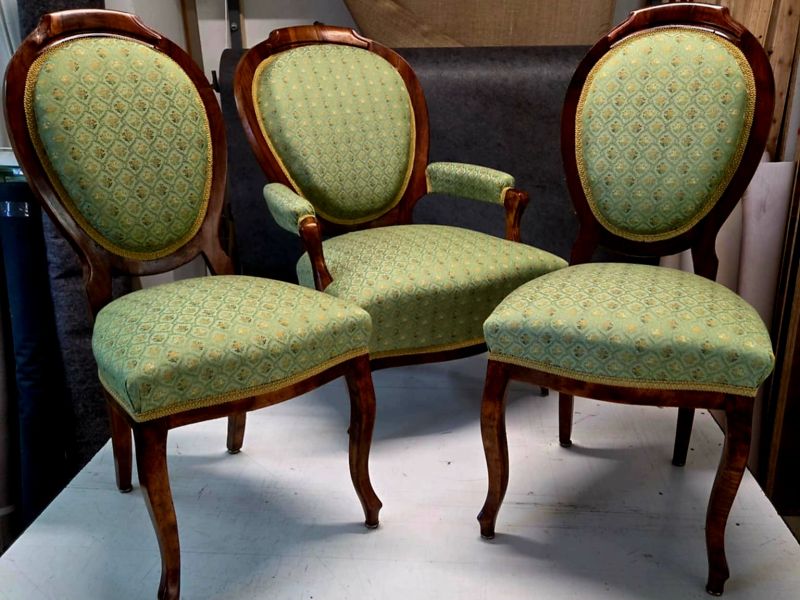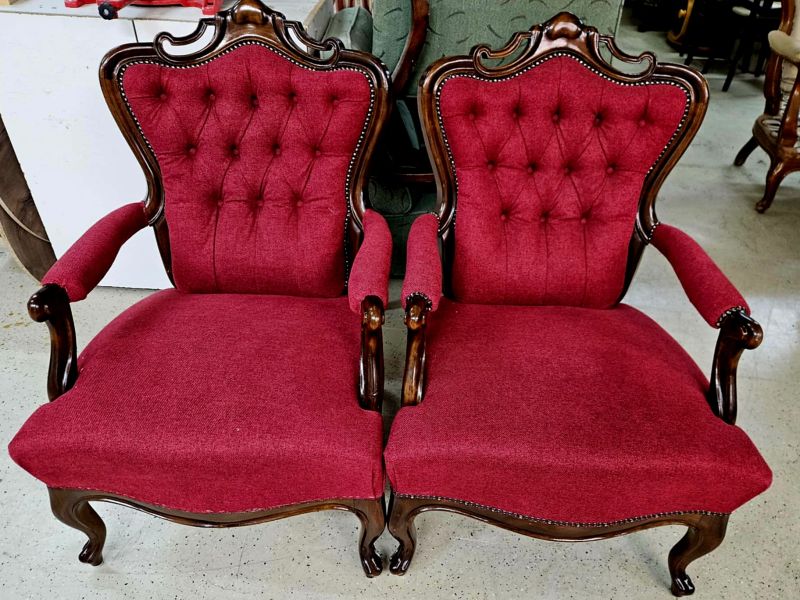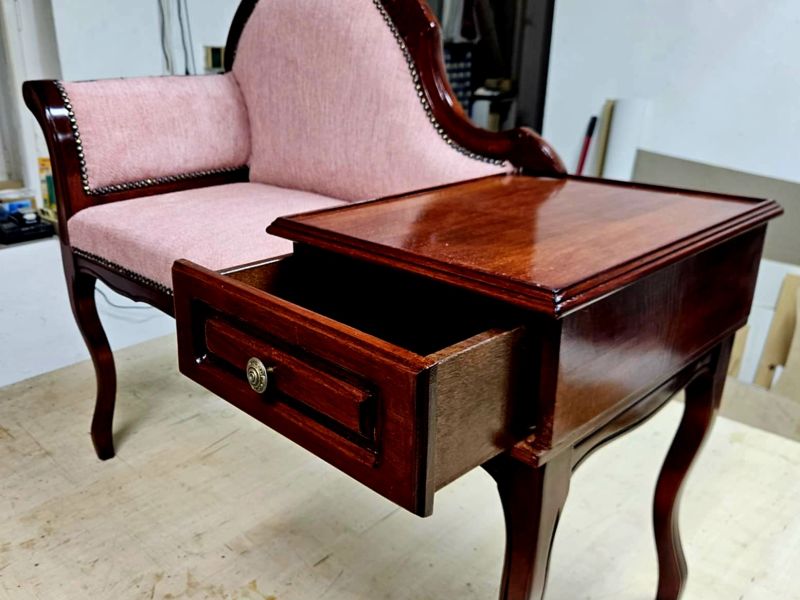In the first half of the 19th century, especially in the Biedermeier period, the art of furniture making took new directions, combining elegance and simplicity.
Biedermeier furniture, including writing desks, were extremely popular among the bourgeoisie, and the special character of the tables and the use of materials says a lot about the period in which they were made. The smooth, well-crafted surfaces and finely carved legs of the desks showed that comfort and decorative features were both important. Desk surfaces were often upholstered to provide a comfortable and practical writing surface. Leather upholstery later became widespread and began to play a major role in such furniture, particularly in the late 19th century.
Leather not only enhanced the aesthetic appearance of the desks, but also justified their choice for its extreme durability and ease of use. The surface of leather is pleasant to the touch, durable, and well tolerates the use of writing utensils, ink or other materials. In this way, leather protected the surface of the table top while providing an elegant appearance.
Desk's top was thoroughly prepared: the original material was removed, the surface was cleaned several times to remove unwanted grease, residual glue, and carefully sanded to ensure a perfectly homogeneous surface. Then, we cut the green antiqued beef hide to size and carefully cleaned the edges of it, to ensure even edges. Perhaps the hardest part of this upholstery process is the simultaneousness of alignment and gluing, as the perfect fit simply cannot be achieved by any other means than hand alignment. It's a slow and meticulous process, with no stretching, no air underneath and no wrinkles, while care must be taken to ensure that the adhesive that has already touched one surface does not dry prematurely on the other. The best place for this operation is a room with a constant temperature, where there are no sudden changes in temperature or air composition, which would affect the adaptation of the leather to the surface (opening doors/windows in rainy weather, and humidity/dust are the worst enemies).
Drying is fast when the two surfaces meet, but we like to wait 24 hours. After a final quick wipe with a clean, dry cloth, it can be transported.



